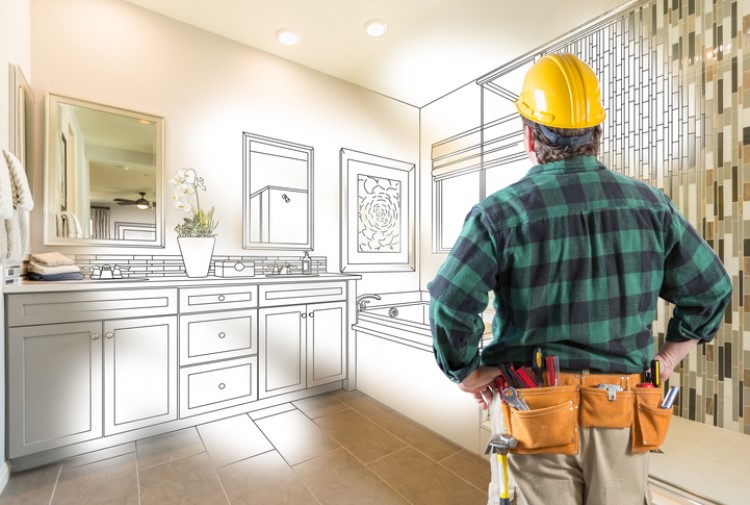In regard to home remodeling, the idea of transforming your living space can be both exciting and overwhelming. Whether you want to update a single room or undertake a complete renovation, a solid plan is crucial to navigating the complexities of the process. From creating https://hansonrepublic.com to selecting the right materials and designs, understanding the different aspects of a remodel can make a notable difference in the outcome.
In this comprehensive guide, we will guide you through a step-by-step plan to ensure your home remodeling project is effective and rewarding. You will find tips on how to remodel your home on a budget while including the latest trends for 2024. We will also explore the benefits of DIY versus employing a contractor, common pitfalls to avoid, and room-specific ideas that cater to each space in your home. No matter your vision, getting informed about your options is the key to creating the home of your desires.
Organizing The Home Remodel
Before diving into the your home remodeling project, it is crucial to create a clear plan. Begin by defining the goals for the remodel—whether it is it's enhance usability, upgrading aesthetics, or increasing property value. Conduct thorough research on current home remodeling trends and gather inspiration from different sources, such as interior design publications or websites. This initial phase will help you articulate your vision and set achievable goals for the project.
Budgeting is a crucial aspect of planning the remodel. Determine how much money you can spend to invest and allocate funds to different areas of the project. Consider expenses related to supplies, work, and unexpected costs that may arise during the remodeling process. To help you manage your finances, create a comprehensive budget breakdown and rank elements that are essential versus those that can be modified or postponed. Implementing cost-saving tips, such as using reclaimed materials or seeking out affordable upgrades, can help your project within financial limits.
Finally, decide if you will tackle the remodel as a DIY project or engage a professional. Both options have their advantages, and your choice should depend on your skill level, the difficulty of the project, and your timeline. If you are leaning toward hiring a contractor, look into and interview potential candidates to find a trustworthy professional who fits with your vision and budget. Whichever path you choose, ensure that you have a organized plan in place to guide you through the entire process of the remodeling process.
Financial Planning and Cost-Saving Tips
Creating a realistic budget is vital for a successful remodel. Begin by estimating the overall costs of supplies, labor, and any unforeseen expenses. It's advisable to set aside an extra 10 to 20 percent of your budget for contingencies, ensuring that you can manage any surprises that may occur during the project. Research local costs for supplies and workforce to formulate an informed budget that aligns with your monetary situation.
To maintain your remodel cost-effective, focus on projects that offer the highest returns on investment. Concentrate on areas like cooking space and bathroom renovations, where the potential for value increase is significant. Explore DIY options for less complex projects, which can reduce considerable amounts. Nonetheless, be honest about your skills and time commitment, as some tasks are best left to the experts to prevent costly errors.
Another efficient approach is to shop for repurposed or excess supplies that can bring character while lowering costs. By being resourceful and adaptable with your choices, such as opting for alternative finishes or fixtures, you can attain the desired look without breaking the bank. Don't forget to check prices from multiple suppliers and think about scheduling your purchases during discount periods to increase your savings.
Trends in Design and Tailored Elements
In the year 2024, home remodeling is heavily influenced by a blend of ease and style, with an emphasis on creating comfortable areas that reflect personal tastes. Earthy materials such as timber, rock, and green resources are in vogue, promoting a cozy look that connects the interior with the outdoors. Additionally, striking shades have made a return, allowing homeowners to express their uniqueness through accent walls, cabinetry, and decor. Including features like patterned wall coverings and specialized lighting can also enhance the overall ambiance, making spaces feel more energetic and cohesive.
Customization is crucial when it comes to making a home truly unique. Features such as integrated storage, nooks, and tailored storage not only maximize functionality but also add character to any space. Walk-in closets and structured study areas continue to increase in demand, reflecting the growing need for order and efficiency in daily life. Furthermore, incorporating home automation into remodels is becoming increasingly popular, offering convenience and enhancing security while seamlessly blending into the home's aesthetic.

As you plan your renovation, consider luxury investments that elevate practicality without compromising on design. Features like retreat-like baths, complete with saunas or soaking tubs, can create indulgent spaces within the home. Open floor plans are still favored, reinforcing relationship building while accommodating contemporary living. By mindfully picking design trends and custom features, you can create a home that is not only beautiful but also personalized to your preferences.
